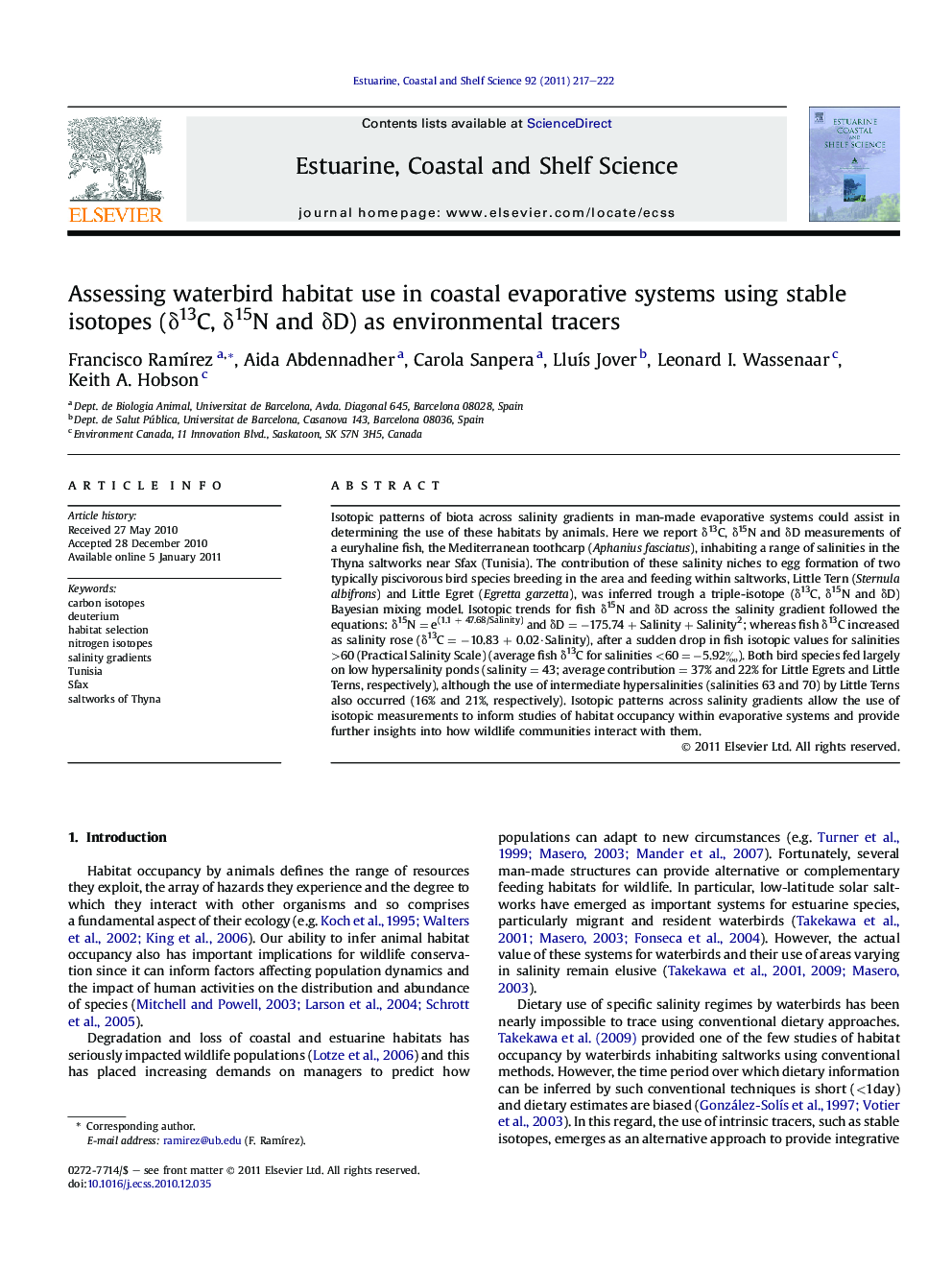| کد مقاله | کد نشریه | سال انتشار | مقاله انگلیسی | نسخه تمام متن |
|---|---|---|---|---|
| 4540674 | 1326683 | 2011 | 6 صفحه PDF | دانلود رایگان |

Isotopic patterns of biota across salinity gradients in man-made evaporative systems could assist in determining the use of these habitats by animals. Here we report δ13C, δ15N and δD measurements of a euryhaline fish, the Mediterranean toothcarp (Aphanius fasciatus), inhabiting a range of salinities in the Thyna saltworks near Sfax (Tunisia). The contribution of these salinity niches to egg formation of two typically piscivorous bird species breeding in the area and feeding within saltworks, Little Tern (Sternula albifrons) and Little Egret (Egretta garzetta), was inferred trough a triple-isotope (δ13C, δ15N and δD) Bayesian mixing model. Isotopic trends for fish δ15N and δD across the salinity gradient followed the equations: δ15N = e(1.1 + 47.68/Salinity) and δD = −175.74 + Salinity + Salinity2; whereas fish δ13C increased as salinity rose (δ13C = −10.83 + 0.02·Salinity), after a sudden drop in fish isotopic values for salinities >60 (Practical Salinity Scale) (average fish δ13C for salinities <60 = −5.92‰). Both bird species fed largely on low hypersalinity ponds (salinity = 43; average contribution = 37% and 22% for Little Egrets and Little Terns, respectively), although the use of intermediate hypersalinities (salinities 63 and 70) by Little Terns also occurred (16% and 21%, respectively). Isotopic patterns across salinity gradients allow the use of isotopic measurements to inform studies of habitat occupancy within evaporative systems and provide further insights into how wildlife communities interact with them.
Figure optionsDownload high-quality image (142 K)Download as PowerPoint slideHighlights
► Saltworks are important systems for estuarine species, particularly waterbirds.
► We report isotopic patterns for saltworks fish across a salinity gradient.
► Through this isotopic framework information on waterbirds habitat usage is gained.
► Waterbirds rely largely on low and intermediate hypersalinity ponds.
► Proposed isotope approach may have implications for wildlife conservation.
Journal: Estuarine, Coastal and Shelf Science - Volume 92, Issue 2, 10 April 2011, Pages 217–222